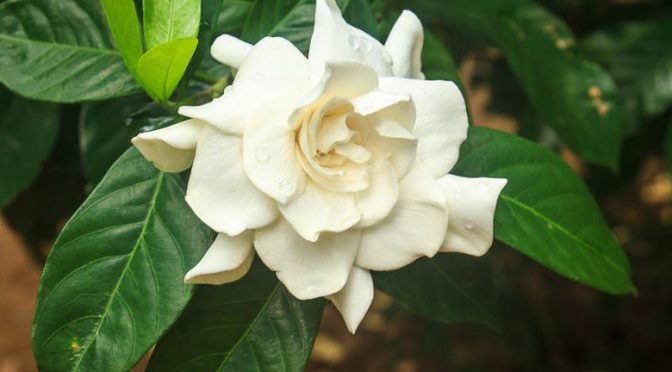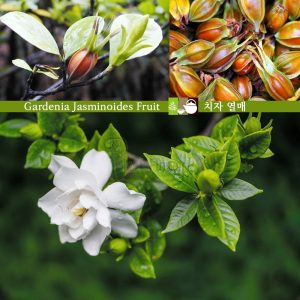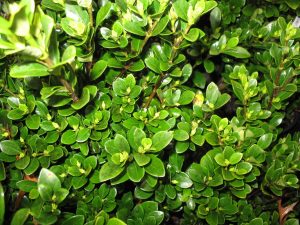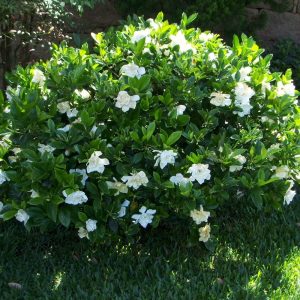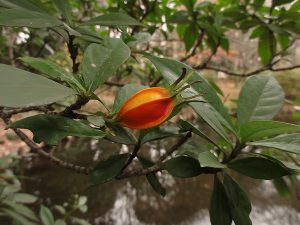| Class and Class No. | 3A ( 27 ) |
| Name: | Wong Yin Chun |
| Year: | 2017-2018 |
Instruction: Type in useful information in the space provided.
| Chinese name: | 山梔子 |
| Family Name (科名): | 茜草科Rubiaceae |
| Scientific name (學名): | Gardenia jasminoides |
| Common name (俗名): | 梔子 |
| 習性:
喜歡濕潤、溫暖、光照充足且通風良好的環境,但忌強光暴曬。 宜用疏鬆肥沃、排水良好的酸性土壤種植。 |
Growth habit:
Like moist, warm, well-lit and well-ventilated environment, but avoid glare exposure. Should be loose and fertile, well drained acidic soil. |
| 葉:
對生葉及三角形托葉。深綠色的光澤常綠的葉子。 |
Leaf:
Leaves and triangular stipules. Leaves are greyish bark and dark green shiny leaves. |
| 花:
白色花瓣厚身,有淡然香味。 |
Flower:
Thick white petals, with light fragrance. |
| 果:
果實是小橢圓形的。 |
Fruit:
Fruit are small oval. |
| 性味功能:
果實用作黃色染料,用於衣服和食物。性寒、味苦,功能清熱瀉火。 |
Properties:
The fruit is used as a yellow dye,[7] which is used for clothes and food. Cold, bitter, heat purging fire. |
| 主治:
在中藥中使用梔子果(水果)來“引火”,從而治療某些發熱性疾病。 |
Treats:
Gardenia jasminoides fructus (fruit) is used within traditional Chinese medicine to “drain fire” and thereby treat certain febrile conditions. |
| 知多一點點:
原產地是中國,台灣,日本 |
More to learn:
Native Range is China, Taiwan, Japan |
Previous Scientific Research (if any):
| 1. |
Useful Link:
| Topics | Hyperlinks |
| General information on Gardenia jasminoides
|
https://en.wikipedia.org/wiki/Gardenia_jasminoides
|
| About Gardenia jasminoides |
www.hktree.com/tree/Gardenia%20jasminoides.htm
|
| About Gardenia jasminoides |
https://www.gardenia.net/plant/Gardenia-jasminoides
|
Questions:
| (Beginner) | Guidelines:
Answer can be directly harvested from the information given. e.g. Q1 What is the colour of the flower? Answer: The colour of the flower is white. |
| (Elementary) | Guidelines:
Answer can be obtained from the information given and the external links. e.g. Q2 Where can you see Gardenia jasminoides in Hong Kong? Answer: We can see Gardenia jasminoides in Ma Shi Chau. |
| (Advanced) | Guidelines:
Question requires higher order thinking. More information should be found from external links or reference before answering the questions. Q3 What is the use of Gardenia jasminoides flower and fruit? Answer: Flowers can be made of tea spices, anti-inflammatory heat can eliminate heat. Is a fine aromatic flowers. |
| Class and Class No. | 3A (25) |
| Name: | Wong Paolo |
| Year: | 2017-2018 |
Instruction: Type in useful information in the space provided.
| Chinese name: | 山梔子 |
| Family Name (科名): | Rubiaceae |
| Scientific name (學名): | Gardenia jasminoides |
| Common name (俗名): | 木丹 ,gardenia, cape jasmine |
| 習性:
常綠灌木 |
Growth habit:
Evergreen shrub |
| 葉:
對生或三葉輪生,長橢圓形或卵狀,表面有光澤 |
Leaf:
Opposite or whorled shiny leaves. Oval in shape. |
| 花:
白色花,芳香, 春夏開花 |
Flower:
Highly fragrant white flowers which bloom in spring and summer |
| 果:
黃色,呈橢圓形,8-11月成熟 |
Fruit:
yellow in colour, oval in shape, matured from August to November. |
| 性味功能
苦,寒。 |
Properties
bitter, cool-natured |
| 主治
降火 |
Treats
“drain fire” and thereby treat certain febrile conditions |
| 知多一點點:
果子可製成黃色的顔料 |
More to learn:
The fruit is used as a yellow dye which is used for clothes and food. |
Previous Scientific Research (if any):
| 梔子提取技術開發研究進展The Research Advances on Technological Development of Gardenia Extraction |
Useful Link:
| Topics | Hyperlinks |
| General information on gardenia | https://florafaunaweb.nparks.gov.sg/special-pages/plant-detail.aspx?id=4216 |
| Gallery on gardenia | http://www.lcsd.gov.hk/en/green/greeningknowledge/plantphoto/shrub_passage/shrub_17.html |
| Plant Profile of gardenia | https://plants.usda.gov/core/profile?symbol=GAJA |
Chemistry and bioactivity of Gardenia jasminoides
|
https://www.sciencedirect.com/science/article/pii/S1021949816301740 |
Questions:
| (Beginner) | Q1. Gardenia fruits can be used for making dyes. What are the medicinal values of gardenia?
Answer: It can “drain fire” and thereby can treat certain febrile conditions |
| (Elementary) | Guidelines:
Answer can be obtained from the information given and the external links. e.g. Q2. What is the plant division of gardenia? Answer: Angiosperms (Flowering Seed Plants) (Dicotyledon) |
| (Advanced) | Q3. What’s the use of gardenia other than for making dye?
Answer: antidiabetic, anti-inflammatory, antidepression, and antioxidant properties, and improvement of the quality of sleep |
